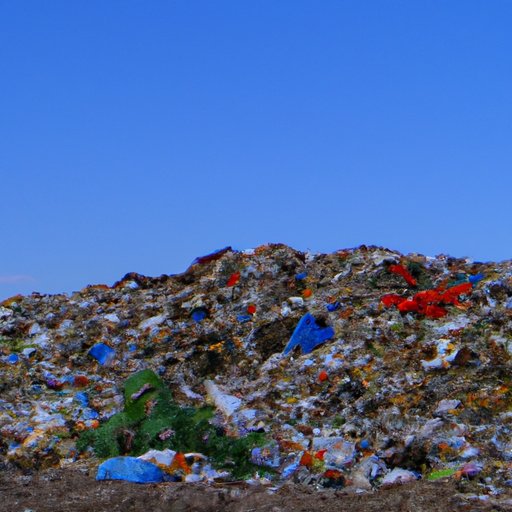Overview of the Components and Process of Landfill Operation
A landfill is a type of engineered waste disposal site that is designed to contain and manage solid waste for long-term storage. It is one of the most common methods of waste disposal, as it is an effective way to contain, store, and manage large amounts of waste material. But how does a landfill work? In this article, we will explore the components and process of landfill operation.
What is a Landfill?
A landfill is an engineered waste disposal site that is designed to contain and manage solid waste for long-term storage. Landfills are typically composed of four main components: a liner system, a leachate collection system, a gas collection system, and a cover system. The liner system consists of a series of impermeable layers such as clay, soil, and plastic, which are designed to prevent leachate (contaminated liquid) from escaping into the environment. The leachate collection system is designed to collect and transport any leachate that may escape from the landfill. The gas collection system is designed to capture and control any gases that may be produced by the decomposition of the waste materials in the landfill. Finally, the cover system is designed to reduce odors and prevent rainwater from infiltrating the landfill.
How Does a Landfill Work?
The process of landfill operation involves several steps. First, the waste material is collected and transported to the landfill. Once at the landfill, the waste is sorted and separated into different categories. This helps to ensure that only appropriate types of waste are accepted into the landfill. The sorted waste is then placed in layers in the landfill, with each layer being covered with a layer of soil or other material. This helps to keep the waste contained and reduces the risk of leachate escaping into the environment. The waste is then monitored and managed over time to ensure that it remains contained and is properly managed.

Exploring the Types of Waste that are Accepted into a Landfill
Landfills must adhere to strict regulations when it comes to the types of waste that can be accepted. Generally, only non-hazardous solid wastes are accepted into a landfill, such as household garbage, yard waste, construction and demolition debris, and some industrial wastes. Hazardous wastes, such as chemicals and medical waste, are not typically accepted into a landfill due to the potential health and environmental risks associated with them.

Examining the Different Layers of a Landfill and their Purposes
Once the waste has been sorted and placed in layers, the landfill is constructed according to a specific design. Typically, there are several layers within a landfill, each serving a different purpose. The bottom layer is usually composed of a liner material such as clay, soil, or plastic, which serves to contain the waste and prevent leachate from escaping into the environment. Above this is a drainage layer, which is designed to collect and transport any leachate that may escape from the landfill. Above this is a layer of soil or other material, which serves to insulate the landfill from the surrounding environment and reduce odors. Finally, the top layer is a cover system, which is designed to keep rainwater from infiltrating the landfill.

Investigating How Landfills are Monitored and Regulated
Landfills are closely monitored and regulated to ensure that they are operated safely and responsibly. The Environmental Protection Agency (EPA) sets stringent standards for landfill operations, and regularly inspects landfills to ensure that they are meeting these standards. Landfills must also monitor their own operations and report any issues or concerns to the EPA. Additionally, many states have their own regulations for landfill operations that must be followed.
Discussing the Benefits and Challenges of Operating a Landfill
Operating a landfill can offer several benefits, including reducing the amount of waste sent to landfills and increasing the amount of energy and resources that can be harvested from waste materials. However, there are also several challenges associated with operating a landfill, such as the cost of constructing and maintaining the landfill, dealing with hazardous waste materials, and managing odor and leachate control. Additionally, landfills must also comply with strict regulations to ensure that they are operated safely and responsibly.
Conclusion
In conclusion, a landfill is a type of engineered waste disposal site that is designed to contain and manage solid waste for long-term storage. The process of landfill operation involves several steps, including sorting and separating the waste, placing it in layers, monitoring and managing it, and complying with regulations. Different types of waste are accepted into a landfill, and each layer of the landfill serves a different purpose. Landfills are closely monitored and regulated to ensure that they are operated safely and responsibly, and there are both benefits and challenges associated with operating a landfill.
(Note: Is this article not meeting your expectations? Do you have knowledge or insights to share? Unlock new opportunities and expand your reach by joining our authors team. Click Registration to join us and share your expertise with our readers.)
